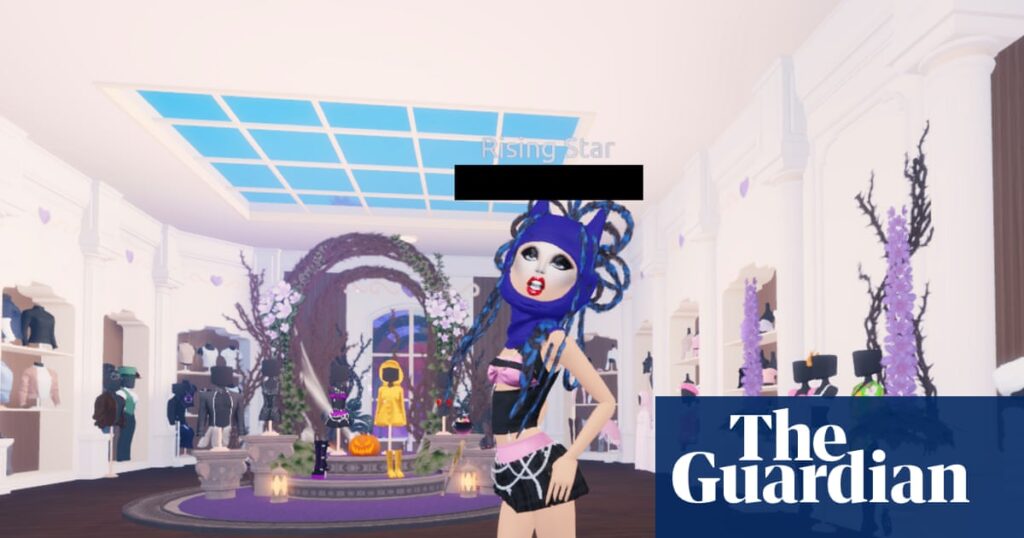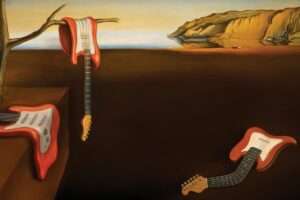
I am an eight-year-old girl, standing near-naked in a room full of strangers. As the room spins and zooms upon me and people glide around me, I clock my features. I don’t look eight. I look like a grey Barbie doll, complete with cleavage and bare feet locked uncomfortably in the high-heel position. I have a large block head that resembles a grey marshmallow.
I’m in the world of Roblox, where block-like avatars transform themselves to explore a universe comprising millions of user-generated games. The platform boasts more than 100 million active daily users. Almost half are children under 13, and in Australia, a 2024 study found that children who used the site play for an average of 137 minutes a day.
Roblox’s Growing Influence and Safety Concerns
On Wednesday, the eSafety commissioner, Julie Inman Grant, stated that Roblox would not be captured by Australia’s new social media ban but warned it remained “on the line” as the ban was continually assessed. “We’re using other tools in our arsenal to keep these other platforms safer … just because a platform is exempted through the legislative rules doesn’t mean it’s safe.”
Over the course of a week, I logged onto the platform as a child to experience first-hand the gaming app of choice for Australian children. In my short time there, my avatar was cyberbullied, aggressively killed, sexually assaulted, and shat on—all with parental control settings in place.
The Allure and Dark Side of “Dress to Impress”
My journey began with one of the most popular “experiences” for young girls, a game called Dress to Impress (DTI), which has had more than 6 billion visits since its November 2023 launch. At its peak, the game had more than a million concurrent users. Vogue has reported that adult fashion junkies have joined the game’s devoted child fanbase, while the game has been promoted as a “household brand in fashion and gaming.”
Clumsily, while soundtracked by a smooth synth jazz track, I began to explore. The gap between my thighs was almost as wide as my waist was narrow. The point of the game is to dress and be judged by fellow players. Players strut the catwalk and are rated on a scale of one to five stars, with rivals able to chat or post commentary in the open chat box. Players can strike a variety of poses—some are free, while other “pose packs” cost Robux.
While promoted as a kids’ game and an outlet for creative fashionistas, a dive into the world of DTI reveals the game’s darker side. I discovered a basement “meat room”—which looks as though you’ve walked into someone’s uterus—hiding a pair of stilettos and a locked door. Other secret rooms are part of the game’s “lore,” offering creepy suggestions that a woman has gone missing.
Monetization and Exploitation in Roblox
DTI’s devoted fanbase is getting restless. Users are complaining of updates that force them to spend more Robux to remain competitive. The increasing monetization of children’s games is a widespread criticism of the platform. Marcus Carter, a professor in human-computer interaction at the University of Sydney, likens the site’s in-game spending promotions to “child gambling,” pointing to countless casino games and “loot boxes” within games that are readily available to children.
“Roblox games are actually monetizing that kind of desire to troll and mess with and negatively impact other players,” Carter says.
Roblox is big business. It is a US$92 billion listed company in the US, owned predominantly by institutional investors. The chief executive, David Baszucki, owns about 10% of the company’s stock. Successful game creators—many of them children—can make money. In 2024-25, the company’s developer exchange program paid out more than $1 billion through a convoluted payment plan under which the company keeps at least 30% of transactions made on the site.
Child Safety and Legal Challenges
Roblox has long faced accusations of being an unsafe platform for children and being frequented by paedophiles. In late 2024, the investment investigator Hindenburg Research called it “an X-rated paedophile hellscape.” Since then, the company has been hit with multiple lawsuits in the US, outlining tragic circumstances in which minors were groomed online and abused.
“Every day, tens of millions of people around the world use Roblox to learn STEM skills, play, and imagine and have a safe experience on our platform. Any assertion that Roblox would intentionally put our users at risk of exploitation is simply untrue,” a Roblox spokesperson said.
In Australia, the eSafety commissioner has been negotiating with the company on a range of new safety measures after raising concerns about “child grooming risks.” By the end of the year, the company has committed to making accounts for under-16s private by default and introducing tools to prevent adults from contacting them without parental consent.
The Future of Roblox and Child Safety
As I continue my experiment logged onto the platform as a child, I come across many more experiences that are clearly inappropriate. The number of inappropriate games I can access while logged on as a child appears endless. It’s for this reason Carter, who is keen to emphasize the positive benefits from gaming and digital play, says he doesn’t have a good answer when parents ask him how they can know their children are safe on Roblox.
“My son is four and I do not intend to ever let him play Roblox,” Carter says. “My life is about video games; I am a professor of games at the University of Sydney, I love games, my son and I are going to be playing lots of games together—but not Roblox.”
As Roblox continues to expand and adapt, the challenge remains to balance its vast, creative potential with the urgent need for enhanced safety measures to protect its youngest users. The platform’s future will likely depend on its ability to address these concerns effectively, ensuring a safe and enjoyable environment for all players.






